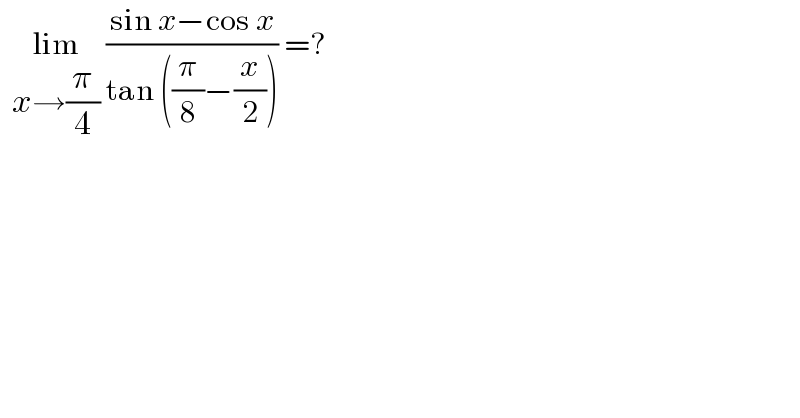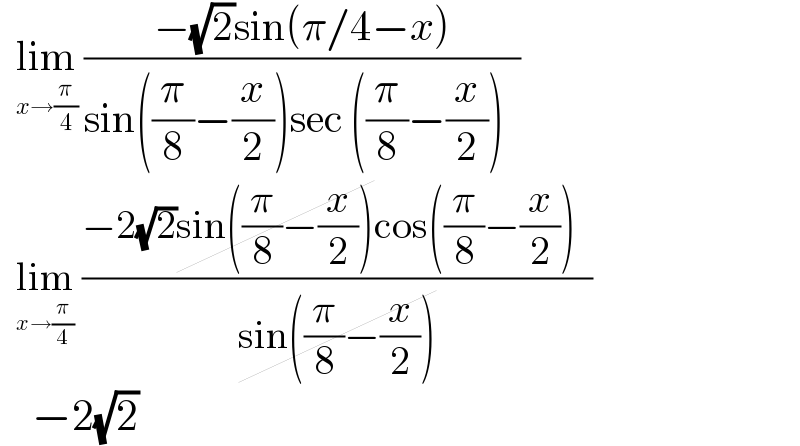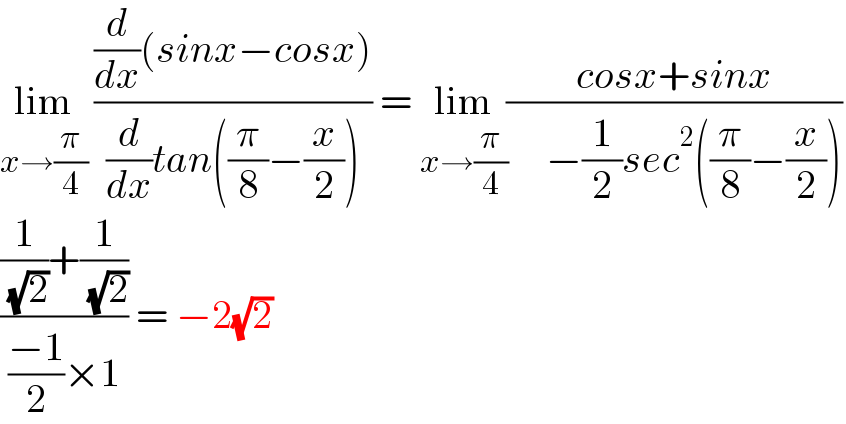
Question and Answers Forum
Question Number 175362 by cortano1 last updated on 28/Aug/22

Commented by infinityaction last updated on 28/Aug/22

Commented by CElcedricjunior last updated on 28/Aug/22
![lim_(x→(𝛑/4)) ((sinx−cosx)/(tan((𝛑/8)−(x/2))))=(0/0)=FI end apply hospital lim_(x→(𝛑/4)) ((cosx+sinx)/(−(1/2)[1+tan^2 ((𝛑/8)−(x/2))]))=((√2)/(−(1/2))) lim_(x→(𝛑/4)) ((sinx−cosx)/(tan((𝛑/8)−(x/2))))=−2(√2) .........le ce^� le^� bre cedric junior.........](Q175366.png)
Answered by BaliramKumar last updated on 28/Aug/22

| ||
Question and Answers Forum | ||
Question Number 175362 by cortano1 last updated on 28/Aug/22 | ||
 | ||
Commented by infinityaction last updated on 28/Aug/22 | ||
 | ||
Commented by CElcedricjunior last updated on 28/Aug/22 | ||
![lim_(x→(𝛑/4)) ((sinx−cosx)/(tan((𝛑/8)−(x/2))))=(0/0)=FI end apply hospital lim_(x→(𝛑/4)) ((cosx+sinx)/(−(1/2)[1+tan^2 ((𝛑/8)−(x/2))]))=((√2)/(−(1/2))) lim_(x→(𝛑/4)) ((sinx−cosx)/(tan((𝛑/8)−(x/2))))=−2(√2) .........le ce^� le^� bre cedric junior.........](Q175366.png) | ||
Answered by BaliramKumar last updated on 28/Aug/22 | ||
 | ||
| ||